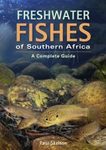Out of Print
By: Rohan Pethiyagoda(Author), Hiranya Sudasinghe(Author), Lukas Rüber(Foreword By)
258 pages, colour & b/w photos, colour illustrations, colour distribution maps, tables
An excellent history of Indian Ocean geological history and biogeography.
![The Ecology and Biogeography of Sri Lanka The Ecology and Biogeography of Sri Lanka]()
Click to have a closer look
About this book
Biography
Related titles
About this book
Despite a steady increase in the pace of biodiversity exploration and research in Sri Lanka, the origins of the island’s fauna and flora have never yet been explored in a synthetic work. This book is a first attempt to draw together the diverse threads that make up this fascinating story. It reviews the historical and recent scientific literature to provide a state-of-the-art context for understanding how the island's biota came to be as it is today. It lays special emphasis on the ecology, biogeography and phylogeography of freshwater fishes, which are arguably the best-studied vertebrate group in the country. The text is richly illustrated with more than 200 figures, photographs and maps, supported also by extensive references to the literature.
This volume is intended to serve as a sourcebook for scientists, students and enthusiasts of Sri Lanka’s spectacular biodiversity, highlighting not just what is known but also the many gaps in our knowledge that beckon as objects of future inquiry. A clear understanding of how, when and from where the ancestors of the plants and animals that now inhabit the island came – whether from Jurassic Gondwana or Pleistocene lndia – is perhaps the first and most important step also in deciding future conservation priorities. The Ecology and Biogeography of Sri Lanka: A Context for Freshwater Fishes provides an indispensable foundation for understanding and appreciating Sri Lanka’s unique biodiversity in its historical and evolutionary context.
Customer Reviews
Biography
Rohan Pethiyagoda, having trained as a biomedical engineer, has devoted much of his life to biodiversity exploration in Sri Lanka. He has published extensively on the taxonomy of amphibians and freshwater fishes, among other groups. He divides his time between Colombo, Sri Lanka and Sydney, Australia, where he is a research associate at the Australian Museum.
Hiranya Sudasinghe received his early education at lsipathana College, Colombo, and has been a member of the Young Zoologists' Association of Sri Lanka. Following his passion, he forwent medical school to enrol instead for a bachelor’s degree in zoology at the University of Peradeniya, from which he graduated with first class honours. He completed his Master’s degree at the same university and is presently reading for his PhD at the Institute of Ecology and Evolution, University of Bern and Naturhistorisches Museum Bern, Switzerland. His doctoral project is on understanding the genomic consequences of miniaturization in the zebrafish relatives. He has lead-authored some two dozen scientific papers, principally on the phylogenetics and taxonomy of Sri Lankan freshwater fishes.
Out of Print
By: Rohan Pethiyagoda(Author), Hiranya Sudasinghe(Author), Lukas Rüber(Foreword By)
258 pages, colour & b/w photos, colour illustrations, colour distribution maps, tables
An excellent history of Indian Ocean geological history and biogeography.
"In their attempt to explain the distribution of fishes in Sri Lanka, the authors have put together a masterful synthesis of Indian Ocean geological history and biogeography [...] a tour de force of scholarship of the highest order [...] a ‘must read‘ for any student who wants to understand the biodiversity and history of life in the region."
– Professor Peter K. L. Ng, Director, Tropical Marine Science Institute, National University of Singapore.
"A comprehensive and exhaustive account of the biogeography of Sri Lanka and a must read for researchers interested in the historical biogeography of not just Sri Lanka but also the Indian subcontinent."
– Professor K. Praveen Karanth, Chair, Centre for Ecological Sciences, Indian Institute of Science, Bangalore, India
"At last, a truly fascinating portrait of Sri Lanka’s biogeographic history."
– Professor Savitri Gunatilleke, Emeritus Professor of Botany, University of Peradeniya, Sri Lanka
"A comprehensive and elegant compilation of what we know about the biogeographic context of Sri Lanka [...] source for a multitude of additional research questions about the unique fauna and flora of this part of the world"
– Dr Ralf Britz, The Senckenberg Zoological Museum, Dresden, Germany
"The first authoritative overview of Sri Lanka’s staggering terrestrial diversity [...] the most complete synthesis possible at this time of its evolutionary history. This text will undoubtedly inspire future generations and serve as an essential beacon guiding further exploration of the island's astonishing biodiversity"
– Dr Lukas Rtiber, Natural History Museum Bern, and Institute of Ecology and Evolution, University of Bern, Switzerland
"A work of formidable scholarship, replete with novel insights into Sri Lankan and South Asian biogeography. The lucid narrative makes the book an enjoyable guide to the origins of the region's biota."
– Dr A. Gopalakrishnan, Director, Central Marine Fisheries Research Institute, India
"I have rarely read a book that joined so many disparate dots to form so lucid a narrative that explains a tropical island biota. Absolutely compelling."
– Professor S. D. Biju, Department of Environmental Studies, University of Delhi
"A magnificent survey of Sri Lanka’s biogeography and ichthyogeography [...] a reminder that climate and sea level, the forces that combined to make Sri Lanka part of a Global Biodiversity Hotspot, also pose grave threats to the island’s incredible contemporary biodiversity in a rapidly warming world"
– Dr Rajeev Raghavan, Kerala University of Fisheries and Ocean Studies, Kochi, lndia












































